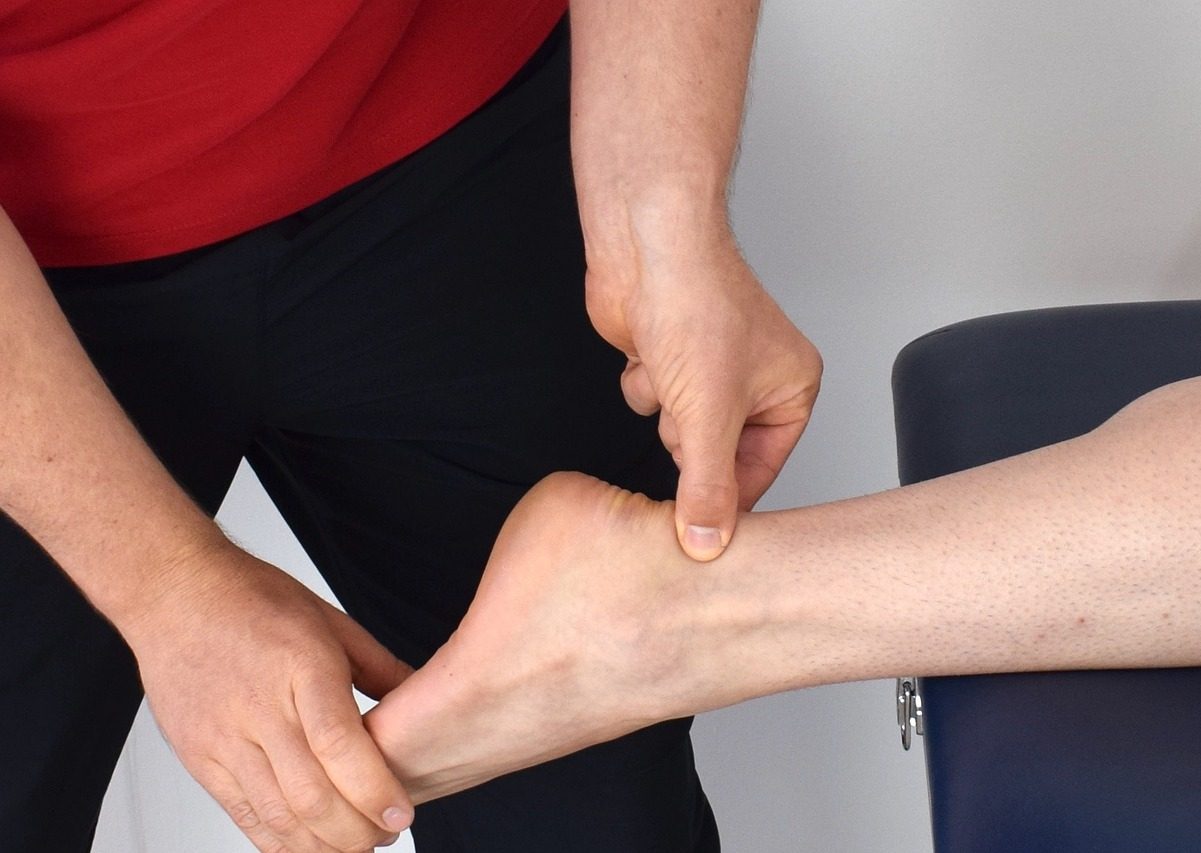Experiencing a clicking sensation in the Achilles tendon without accompanying pain is not uncommon and can raise questions about the health and function of the tendon. This phenomenon occurs as the tendon moves over the structures of the ankle during physical activity. While it’s typically not associated with the discomfort that characterizes conditions such as Achilles tendinopathy, the sensation can be disconcerting for those who are attentive to the signals their bodies send about potential issues in their musculoskeletal system.
The absence of pain with Achilles tendon clicking may suggest that the tendon structure has not undergone significant changes or damage that would otherwise result in discomfort. Many individuals notice this clicking sound or sensation when the tendon rubs against surrounding tissues or as it slides over the heel bone during movement. It is often benign, and may not require medical intervention unless it is accompanied by other symptoms or begins to impact daily activities.
Understanding why the Achilles tendon clicks when it is not painful is important for maintaining peace of mind and continuing an active lifestyle. Causes can range from simple biomechanical factors to early signs of a developing condition that, while currently painless, could require attention to prevent future injury. Observing changes and being mindful of the tendon’s behavior during exercise can help individuals determine if and when to seek professional advice.

I am a Nurse Practitioner licensed across multiple states, with experience in cardiology, nephrology, and family medicine. My current focus is on primary care, where I advocate for a holistic approach to healthcare, often recommending functional medicine to patients when suitable.
Understanding the Achilles Tendon
The Achilles tendon is a vital part of the musculoskeletal system, intricately connected to the foot’s mobility and stability. It’s known both for its strength and for being prone to overuse injuries, but a clicking sound without pain does not necessarily indicate a problem.
Anatomy of the Achilles Tendon
The Achilles tendon, located at the back of the ankle, is the largest and strongest tendon in the human body. It is formed by the confluence of two major muscles of the calf—the gastrocnemius and the soleus—attaching them to the heel bone, or calcaneus. This tendon can withstand great forces during activities like running and jumping.
Key Features:
- Origin: Gastrocnemius and Soleus Muscles
- Insertion: Calcaneus (Heel Bone)
- Length: Approximately 15 cm in an average adult
Function of the Achilles Tendon
The primary function of the Achilles tendon is to facilitate foot movements such as plantarflexion (pointing the toes) and to provide stability during the push-off phase of the gait cycle. This tendon plays an important role in enabling locomotion, including walking, running, and jumping.
Characteristics:
- Enables powerful lower limb movements
- Absorbs impact during foot strike
- Essential for balance and propulsive forces during movement
Common Causes of Clicking Sounds
Clicking sounds from the Achilles tendon without associated pain can arise from a few specific biomechanical actions. These auditory signals are typically the result of tendons moving over bony structures, interactions within the musculotendinous junction, or the movement of tendon sheaths.
Tendon Snapping Over Bone
When the Achilles tendon glides over the heel bone, or calcaneus, a clicking noise may be produced. This can be due to anatomical variations or temporary changes in how the tendon moves, possibly related to activity level or changes in surrounding tissues.
Muscle and Tendon Interaction
The interplay between muscles and their attaching tendons can create audible clicking. This may occur during movements that require the gastrocnemius and soleus muscles of the calf to contract and relax rapidly, causing a snapping sound as the tendon moves.
Tendon Sheath Movement
The sheath surrounding the Achilles tendon, filled with synovial fluid, helps in the smooth movement of the tendon. If the fluid movement is disrupted or if the tendon tracks abnormally within the sheath, it may lead to a clicking sound.
Diagnostic Process
When assessing an individual with a clicking Achilles tendon without pain, healthcare professionals employ a methodical diagnostic process. This process typically includes evaluating the patient’s physical state through examination, using imaging technology to gain insights about the tendon’s condition, and reviewing the patient’s medical history for any factors that may contribute to the condition.
Physical Examination
During a physical examination, the clinician will palpate the Achilles tendon to check for any abnormalities or mechanical issues. They might perform specific maneuvers that place stress on the tendon to reproduce the clicking sound, aiding in pinpointing the location and possible cause of the symptom.
Imaging Tests
Imaging tests such as ultrasound or MRI are useful tools in the diagnosis. An ultrasound may reveal subtle changes in the tendon’s structure or evidence of tendinopathy even if the patient isn’t experiencing pain. Additionally, an MRI can provide detailed images of both soft tissue and bone, potentially uncovering asymptomatic tear or degeneration within the Achilles tendon.
Patient History Assessment
Lastly, a patient history assessment is critical for understanding the context of the tendon’s condition. Healthcare providers will ask about any previous injuries, activities that could contribute to tendon stress and the duration of the clicking symptom. Combined with the physical and imaging findings, this historical information guides the clinician toward an accurate diagnosis.
Clicking Achilles Tendon Without Pain
A clicking sensation in the Achilles tendon without accompanying pain may sometimes be felt during certain movements. While it may cause concern, it is often not indicative of a serious medical issue.
Harmless Tendon Movements
Occasionally, when the Achilles tendon moves over structures in the ankle, it can produce a clicking sound. This is particularly true during activities that require repetitive movement such as walking or running. Many individuals experience these sounds and they are typically harmless if not associated with pain or discomfort.
Biomechanical Considerations
The biomechanics of the foot and ankle play a significant role in Achilles tendon health. A clicking sound without pain could reflect a minor biomechanical inconsistency that does not disrupt normal function. Factors such as foot pronation or tendon stiffness may often be involved, although they do not necessarily require medical intervention in the absence of pain.
Treatment and Management
When addressing a clicking Achilles tendon that is not accompanied by pain, treatment and management focus on preventing progression to a painful condition and maintaining tendon health.
Conservative Treatments
Conservative treatment plays a vital role when managing a clicking Achilles tendon without pain. Approaches such as rest and activity modification ensure the avoidance of overuse or further irritation of the tendon. Patients are advised to avoid activities that may exacerbate the clicking sound or potentially lead to tendinopathy. Moreover, proper footwear that provides adequate support can help mitigate unnecessary strain on the Achilles tendon.
Exercise and Physical Therapy
A tailored exercise and physical therapy program can help strengthen the surrounding musculature, improve ankle stability, and promote tendon health. Eccentric exercises, which involve lengthening the muscle while contracting it, are particularly beneficial. For example:
- Heel drops: Stand with the ball of the foot on a step, slowly lower the heel below the level of the step, and then return to the starting position.
- Isometric contractions: Keeping the foot in a neutral position, press it against an immovable object such as a wall, hold for a few seconds, then release.
Progressive loading exercises, under the guidance of a physical therapist, increase tendon resilience and aid in the normalization of tendon structure.
Prevention Strategies
Prevention is key in maintaining healthy Achilles tendons, especially for those active in running and jumping sports. Focusing on proper footwear and routine stretching and strengthening exercises can mitigate potential problems.
Proper Footwear
Selecting the correct footwear is pivotal. Shoes should provide ample cushioning and support to reduce stress on the Achilles tendon during physical activities. It’s recommended to replace athletic shoes before the cushioning starts to wear down, and people with specific foot types might benefit from orthotics to correct alignment issues that could put extra strain on the tendon.
Stretching and Strengthening Exercises
Incorporating specific exercises into one’s routine can promote tendon health. Stretching exercises aim to improve flexibility, reducing the risk of strain. For example, calf stretches and Achilles tendon stretches are vital. It’s essential to perform these stretches correctly to avoid additional stress on the tendon.
Strengthening the calf muscles can lessen the load on the Achilles tendon during activities. Exercises such as calf raises, heel drops, and leg presses should be executed with controlled movement to effectively build strength without causing injury. A gradual increase in intensity is advised to allow the tendon to adapt.
When to Seek Medical Attention
Individuals need to recognize when a clicking Achilles tendon without pain may still merit a visit to a healthcare professional. Awareness of symptoms and understanding when to seek care can prevent potential complications.
Symptoms Requiring Evaluation
- Persistent Clicking Sound: While a clicking Achilles tendon may not be painful, if it persists or is accompanied by any sensations of discomfort, one should consider an evaluation.
- Sudden Changes: The appearance of a new clicking sound or an alteration in the frequency or character of the click should prompt a medical review.
Professional Care Criteria
- Professional Diagnosis: A healthcare provider can assess the Achilles tendon for underlying conditions that might not yet be causing pain but could lead to issues if untreated.
- Appropriate Intervention: Early intervention by a professional may include recommendations for activity modification, physical therapy, or further diagnostic testing to ensure tendon integrity.
Long-Term Outlook
When considering the long-term outlook for an Achilles tendon that clicks without pain, it is essential to understand that the absence of pain does not necessarily equate to the absence of an issue. Proactive monitoring and early intervention could significantly affect the long-term health of the Achilles tendon.
Prognosis for Asymptomatic Clicks
The prognosis for individuals experiencing asymptomatic clicks in the Achilles tendon is typically favorable. Most cases do not evolve into painful conditions or lead to significant injury when appropriately managed. However, it is important to note that a clicking sound could be an indicator of underlying mechanical changes or early degenerative processes. Therefore, even without discomfort, it is prudent for one to remain vigilant and observe if any changes in the frequency or intensity of the clicking occur.
Monitoring and Reassessment
Consistent monitoring and an occasional reassessment play a vital role in ensuring the long-term health of an asymptomatic clicking Achilles tendon. This should include:
- Regular physical examination: To detect any subtle changes in tendon structure or function.
- Ultrasound imaging: May be employed periodically to visualize the tendon’s internal state, ensuring there are no developing pathologies or worsening wear.
- Activity modification: If the clicking persists or changes in nature, altering one’s activity level or type might be necessary to reduce stress on the tendon.
- Professional follow-up: Regular check-ins with a healthcare provider can provide reassurance or early detection of problems.
By adhering to a regime that focuses on proactive management, individuals can generally maintain tendon health and prevent potential complications associated with asymptomatic clicking of the Achilles tendon.
Lifestyle Considerations
Managing a clicking Achilles tendon without pain often involves adopting lifestyle choices that can help reduce stress on the tendon and prevent potential future injuries.
Activity Modifications
Individuals experiencing a clicking sound from their Achilles tendon should consider modifying their physical activities to mitigate stress on the tendon. It’s essential to:
- Reduce high-impact activities, like running or jumping
- Introduce low-impact exercises, such as swimming or cycling, which place less stress on the Achilles tendon
Making these changes can help by allowing the tendon to rest and potentially reduce the clicking sensation.
Ergonomic Adjustments
Ergonomic adjustments in one’s daily routine can also contribute to reducing tendon stress. Specific changes include:
- Ensuring that footwear provides proper support, especially shoes with cushioned heels to lessen impact
- Using a footrest or adjusting chair height to maintain proper leg alignment and relieve tension on the tendon while seated
By making these ergonomic tweaks, individuals can help decrease the load on their Achilles tendon during everyday activities.
Potential Complications
Even if an individual experiences a clicking Achilles tendon without pain, there are potential complications that should not be overlooked. These issues may manifest over time, and monitoring for any changes or persistent symptoms is essential.
Risk of Injury from Ignoring Symptoms
Ignoring a clicking Achilles tendon may lead to an increased risk of injury. This symptom can be indicative of underlying issues with the tendon such as fibrotic adhesions or subtle forms of tendinopathy that have not yet manifested as pain. By disregarding these signs, a person may continue activities that exacerbate the condition, leading to a greater likelihood of tendon damage that may result in more severe complications.
Cumulative Stress Damage
Repeated stress on the Achilles tendon without appropriate rest and treatment can lead to cumulative stress damage. Even in the absence of pain, the mechanical action of a clicking tendon suggests that normal tendon motion is compromised. Over time, the tendon can incur micro-tears and degenerative changes, which may weaken it and increase the risk of a rupture or chronic tendinopathy.
In both cases, early intervention and assessment by a healthcare professional are needed to prevent further issues and to maintain tendon health and function.
Frequently Asked Questions
When it comes to the Achilles tendon, unusual sounds can be a cause for concern. This section answers common queries related to the clicking and popping sounds that might arise from the Achilles tendon during movement.
What causes a clicking sound in the Achilles tendon when walking?
A clicking sound in the Achilles tendon when walking can result from tendons snapping over bony prominences, or from the movement of tendons or ligaments within their sheaths. This phenomenon may not necessarily be painful.
Is it normal for the Achilles tendon to make a popping sound without feeling pain?
It may be considered common for tendons to emit a popping or clicking sound without pain. However, the absence of pain does not guarantee the absence of an underlying condition, and if the sound is recurrent or concerning, medical advice should be sought.
How long does it take to recover from crepitus in the Achilles tendon?
Recovery time for crepitus in the Achilles tendon can vary depending on the underlying cause and the effectiveness of the chosen treatment approach. Medical evaluation is necessary for appropriate recovery time estimation.
What should be done if you feel a pop in your heel but experience no pain?
If one feels a pop in their heel but does not experience pain, monitoring the area for other symptoms such as swelling or discomfort is recommended. If symptoms occur or the popping sound persists, they should consult a healthcare provider.
Why does the Achilles tendon produce a clicking noise when descending stairs?
The Achilles tendon may produce a clicking noise when descending stairs due to increased tension and interaction with surrounding structures. The change in angle and force while descending can contribute to this noise.
Can the Achilles tendon snap even if there’s no associated pain?
The Achilles tendon could potentially snap without immediate associated pain, particularly in instances of gradual wear and tear. An individual may also experience a delayed onset of pain following such an event. It remains neccesary to seek medical attention if a snapping is felt.

